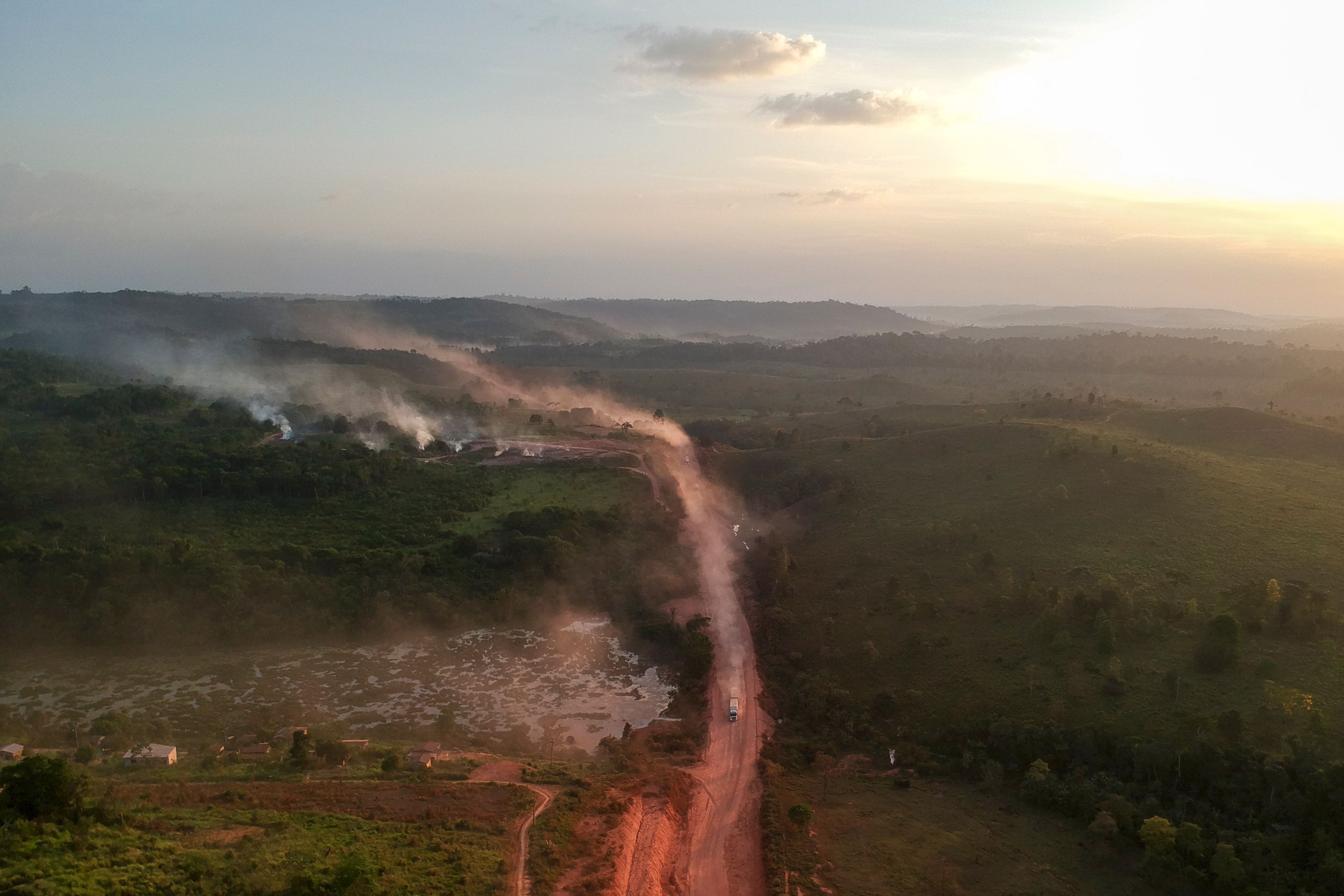About the life-cycle assessment of illict drugs - and why we urgently need a green drug policy

This year's United Nations World Drug Report highlights for the first time the nexus between illicit drugs and the environment. In view of climate change, it is time to feed the debate with facts and make drug policy greener..
By Jorrit Kamminga
For a long time, illicit economies were mainly discussed as a security problem with social and developmental consequences. The fact that illicit cultivation and production of coca, opium poppies and cannabis also harm the environment has only come into focus through the growing debate on climate change. This year's World Drug Report includes a special booklet on the link between illicit drugs and the environment. Illicit drug economies exploit people and the environment, especially in the global South. For millions of marginalised small-scale farmers, the illegal cultivation of coca, opium poppy and cannabis is a matter of survival. The report first establishes the link between drugs and environmental degradation in the context of the Sustainable Development Goals, climate change and ecological sustainability, and then provides a detailed look at environmental impacts.
According to recent UNODC estimates, the cultivation areas of coca and opium poppy alone together cover half a million hectares. This is a small part of the total land used for food crops, but still significant in terms of local effects. Abundant water, fertilisers and pesticides are used to cultivate these crops. The smallholders often live in isolated marginalised regions far from any infrastructure or state presence. Most coca is grown in the Andean region. There, farmers plant the bushes on small plots in national parks and forest reserves - ecosystems that are particularly fragile and worthy of protection. After harvesting, the coca leaves are processed on site, using chemicals such as petrol, sulphuric acid, potassium permanganate, sodium hydroxide and acetone. Because production is illegal and there is correspondingly no infrastructure for disposing of the toxic waste, it ends up unfiltered in the environment.
Illicit cultivation and deforestation
In the Amazon regions, we have seen a huge loss of primary forests in recent years. Unsustainable agricultural practices and illegal logging are the main reasons for deforestation. But the illicit cultivation of coca also contributes to this - directly and indirectly.
“Coca cultivation is considered the so-called spearhead of the agrarian frontier: the cultivation of the shrubs is accompanied by the expansion of settlement and agricultural land in actual protected areas.”
Indirectly, the consequences of coca cultivation are particularly strong: the World Drug Report 2022 refers, among others, to a study from 2020 that shows how money laundering activities of the drug trade contribute to the loss of forests. The study looked at how land use was changing in a Mayan biosphere reserve in Guatemala. It found that cattle ranching was responsible for most of the deforestation in the reserve. In almost all cases, it could be shown that this was directly linked to drug trafficking organisations that invested in cattle ranching for money laundering, drug smuggling or territorial control.
The CO₂e footprint of illicit drugs
Measuring the greenhouse gas emissions caused does not make the ecological footprint of drug production any better. Studies on the carbon footprint of cocaine and cannabis production show that the emissions of drug production can be significant. While the CO₂e footprint of coca cultivation is still relatively small, that of cocaine is enormous.
“The production of one kilogramme of cocaine releases the same amount of carbon dioxide as when a passenger car drives 2,358 kilometres - i.e. once across Europe.”
The cultivation of cannabis leaves an even larger CO₂e footprint. This is mainly because the plant is grown indoors. Indoors, light, heat and ventilation have to be generated artificially.
"The CO₂ footprint of indoor cannabis cultivation ranges from 2,300 to 5,200 kg CO₂e per kilogram of dried cannabis flower. This corresponds to a car journey of up to 20,000 kilometres."
For outdoor cannabis cultivation, the estimates are much lower, ranging from 22.7 to 326.6 kg CO₂e per kilogramme of dried cannbis flower. Compared to a cup of coffee, the environmental impact of a joint whose raw material has flourished indoors is much higher.
Political responses and Alternative Development projects
For decades, the German Federal Ministry for Economic Cooperation and Development (BMZ) has been working for sustainable income alternatives in drug crop cultivation areas. In this context, the environmental aspects of drug markets and drug policies are elementary. Alternative Development approaches, through which small-scale farmers are empowered to break away from illicit economies and develop legal and sustainable income opportunities, are becoming increasingly green.
For example, an ongoing Alternative Development project in Myanmar promotes the sustainable cultivation of coffee and avocado, combined with reforestation efforts and sustainable handicrafts. In Chiang Rai, Thailand, an Alternative Development project focusing on sustainable forest management aims to reduce CO₂ emissions by 106,788 tonnes over a 17-year period (2016-2033). Similarly, payments for environmental services have been integrated into an Alternative Development project in forest reserves in the Valle del Cauca, Colombia. Farming families protect the forest and the quality of the water supply, and in return receive payments for their environmental services and technical support to grow crops more productively. This has led not only to environmental recovery but also to an increase in household incomes by an average of 42%.
Especially against the backdrop of severe biodiversity loss and global warming, these examples show the potential of Alternative Development projects.
“Green drug policies are forward-looking, as they achieve vital results in terms of income generation and the protection of natural resources.”
First steps on a long but vital road
The World Drug Report 2022 uses concrete examples to show how environmental and drug policies can interact. The publication of the special booklet is thus one of many right steps towards a future-proof drug policy that supports sustainable and environmental-friendly rural development.